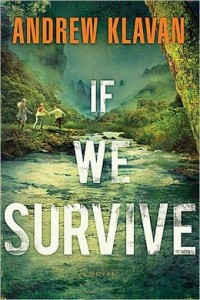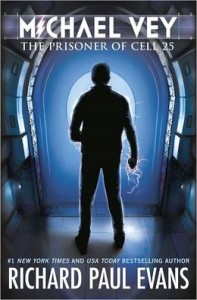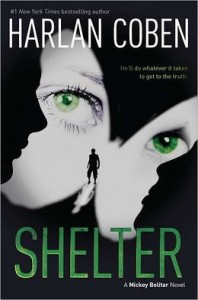note: this post originally appeared on December 11, 2012. Enjoy this one from the archives!
“. . . Courage is not simply one of the virtues, but the form of every virtue at the testing point, which means, at the point of highest reality.” C. S. Lewis, The Screwtape Letters.
Back at the turn of the 20th century, boys in knickers devoured dime novels about Deadeye Dick and Frank Merriwell, the Yale football hero. Their mothers may have deplored the fisticuffs and ground-level literary style, but while thrilling to one hairbreadth escape after another, those boys were gaining some idea of chivalry, honesty, and physical courage which would help shape their character. Though experience is the best shaper of character, and personal role models outshine fictional ones, having a few extra examples of manliness in the imagination closet can’t hurt. The dime-novel tradition is still alive in series books like the New Hardy Boys and two I’ll review today, and writers like Roland Smith and Will Hobbs still publish clean, action-packed adventure novels in the classic style of Treasure Island. “Thrillers” are often dismissed as escapist literature, but the migration can go both ways: while the reader is compulsively turning pages, some of the protagonists’ resourcefulness and grit may be seeping into him. Or her.
If We Survive, by Andrew Klavan. Thomas Nelson, 2012, 339 pages plus discussion guide. Age/interest level: 

It’s too bad you can’t always live as if it were the last moment of your life. Because, you know, it might be—it might really be. And if we could really see it that way, really live like that, I think we’d all feel a lot differently about everything; I think we’d all feel a lot more the way God wants us to feel.
Whenever I review an Andrew Klavan book I’m always compelled to include the first sentence. So here goes: “We were in the cantina waiting for a bus when Mendoza walked in and shot the waiter dead.”
Okay, take a breath: Will Peterson, age 16, is in Central America at the conclusion of a short-term mission trip. But the timing couldn’t be worse. Revolution has been simmering in this tiny country for years, and chooses this very minute to boil over. After the unfortunate waiter is shot by Mendoza, the local strongman, the Americans are rounded up and declared under arrest. Next they are herded to the nearest jail for “questioning,” but very soon it becomes clear to them that diplomatic channels will not suffice. Their only hope for staying alive is to make a break for the border—fast.
Besides Will, our narrator, the company includes Pastor Ron, calm and grounded Meredith, pretty and hysteria-prone Nikki, intellectual, left-leaning Jim, and Palmer Dunn, their driver and pilot. Dunn is a skeptic and cynic—and a Marine with combat experience. Something in his past is obviously eating at him, and he appears to have no concern for anybody in the world. But that’s a case of things not being what they seem. It will come as no surprise that Palmer is their ticket for getting out of the country, and Will is going to grow up a lot.
For thrills and chills, this story has no flaws. I actually liked it better than Homelanders or Crazy Dangerous; in spite of the extreme situations (don’t even ask about the crocodiles!) it seemed more realistic to me. True, I wasn’t sure if a 16-year-old would be able to handle a machine gun that’s been thrust into his hands for the first time–but the pacing is flawless, as befits a master of the genre: moments of sheer terror are balanced by interludes of reflection and taking stock.
Klavan is often criticized for his black-and-white moralism and rightwing flag-waving. The latter takes a back seat here—even though Jim sees his Marxist talking points explode before his eyes. But if there’s ever a place for black-and-white moralism, it’s those moments when you’re staring down a gun barrel, when you feel “the strange bright eagerness to live every second until all the seconds were gone.” Not that we all know quite how that feels, but Klavan has conjured up a close approximation. To walk—or run—so closely with Will Peterson as he sees his own courage shaped and tested can help a young man picture himself in a similar spot. Courage comes in all shapes and colors, and most of us, hopefully, will never face a firing squad. But all of us encounter those moments when time draws to a point and we’re required to say something or do something that takes courage. Will we let the minute pass, or live as if it’s the last one of our lives?
- Worldview/moral value: 5 (out of 5)
- Literary value: 4.5
Both of the following books were first in a series, both published in 2011, with the second installment of the series published last summer. Both are by popular authors who gained fame and a readership with best-selling adult titles and decided to take a leap into the exploding YA market. Publicity campaigns launched both series successfully, and readers lined up for volume 2. Neither admit much of a spiritual dimension, but they do present relatable characters responding bravely to crises situations.


The author was a successful advertising executive when he wrote a story for his two daughters called The Christmas Box. Though originally self-published for family and friends, he became an almost-overnight sensation when increasing demand got him a book contract for an instant classic. I’ve managed to reach a rather advanced age without reading The Christmas Box, but I’m sure it has its virtues. Michael Vey, the hero of Evans’ first book for young adults, has his virtues too, which in my opinion outweigh his drawbacks.
Michael, age 14, is an apparent loser when we first encounter him at a middle school in Idaho—his father died and his Tourette’s Syndrome has saddled him with risible tics. The great Northwest is a far cry from Pasadena, where he was born, but he and his mother have moved there because of another unfortunate quality: Michael is electrical. He is capable of giving off severe jolts to anybody who messes with him, and there are individuals who are very interested in him because of it. Michael doesn’t know all the reasons for the move to Idaho, but due to his puny exterior and his Tourette’s he has no friends except the lardy Osstin (named for the city where he was born, by a mom who can’t spell), who loves food and girls and technology with equal fervor.
Soon, however, Michael discovers that Taylor, one of the most popular girls in school, has some unique abilities of her own. Their attempt to track down the source of this coincidence catches the attention of some very unsavory characters, who kidnap both Taylor and Michael’s mom. Michael’s determination to rescue them will draw some unlikely allies and land him in the very heart of a super-evil enterprise, where he must make some impossible choices and overcome impossible odds. It’s a page-turner with a science-fiction edge that strains credulity at times, and since none of the good guys are over 17 years old, their competence (“I’m on it!” “Will do!”) grows a little too slick and annoying (at least to me). But our suspension of disbelief is for the most part rewarded. Besides courage, Michael must also exercise discernment, generosity, and trust, and when he’s at his lowest he discovers the power of gratitude. The band that gathers around him will go on to further adventures (Rise of the Elgin was published in July–but I haven’t read it) in their quest to save the world from some very bad actors. The excitement rises to a satisfying conclusion without resorting to profanity or graphic violence. For escapism where virtue is rewarded, it fills the bill.
- Worldview/moral value: 4
- Literary value: 3.5
Shelter, by Harlan Coben. Putnam, 2011, 288 pages. Age/interest level: 12-up.

Newark, New Jersey, is where 15-year-old Mickey Bolitar ends up after his dad was killed in an auto accident and his mom goes off the deep end, leading to permanent rehab. Uncle Myron is his closest relative, so Mickey moves into the basement of a house that was made famous, unbeknownst to me, by the author’s popular Myron Bolitar detective series. Myron is a sports agent, not a detective, but his clients’ difficulties tend to put him in face-offs with crime lords and thugs. Mickey falls heir to his uncle’s legacy when Ashley, the sweet girl he met on his first day at the new school, goes missing. Nobody seems to know anything about her, and to complicate his world, “Bat Lady,” the reclusive old woman who haunts the imaginations of the neighborhood kids, pops out on her front porch one day to tell Mickey his father is still alive.
The author knows how to ratchet up the suspense machine, but at times it feels a little too mechanical: Insert second appearance of mysterious symbol here. Include two outcast friends. Drop third mention of green-eyed sandy-haired man. You can also hear the gears grinding when the class nerd that Mickey befriends rides to an improbable rescue. Mickey’s investigations take him to the seedy side of Newark, where the bad guys talk like gangsters in a 1950s movie and the depraved depths of the strip club/white slavery operation they’re running are not explored because this is a YA novel. Not, mind you, that I would want such depraved depths to be explored in a YA novel. The author can make PG-rated characters sound sinister, but all these scenes have an air of forced sanitation about them. The ending, in which Bat Lady’s identity is revealed and the stage is set for the next book (Seconds Away), stretches credulity to the breaking point. In spite of these weakness, it’s the kind of book Andrew Klavan told us he liked to read as a kid: “I loved books about tough guys with guns who rescued dames from danger!” Though not provided with a sidearm, Mickey is likeable and believable and he puts his life on his line to rescue the dame–er, girl. Other characters, too: His friend Ema traces an interesting character arc that will have overweight unpopular girl readers cheering. Maybe next time they won’t be propelled into X-rated territory.
- Worldview/moral value: 3.5
- Literary value: 3
Stay Up to Date!
Get the information you need to make wise choices about books for your children and teens.
Our weekly newsletter includes our latest reviews, related links from around the web, a featured book list, book trivia, and more. We never sell your information. You may unsubscribe at any time.
Support our writers and help keep Redeemed Reader ad-free by joining the Redeemed Reader Fellowship.
Stay Up to Date!
Get the information you need to make wise choices about books for your children and teens.
Our weekly newsletter includes our latest reviews, related links from around the web, a featured book list, book trivia, and more. We never sell your information. You may unsubscribe at any time.
FREE Bible Guide!
Get a guide to the Best Bibles for Children and Teens. Perfect for an Easter gift.
We'd love to hear from you!
Our comments are now limited to our members (both Silver and Golden Key). Members, you just need to log in with your normal log-in credentials!
Not a member yet? You can join the Silver Key ($2.99/month) for a free 2-week trial. Cancel at any time. Find out more about membership here.

